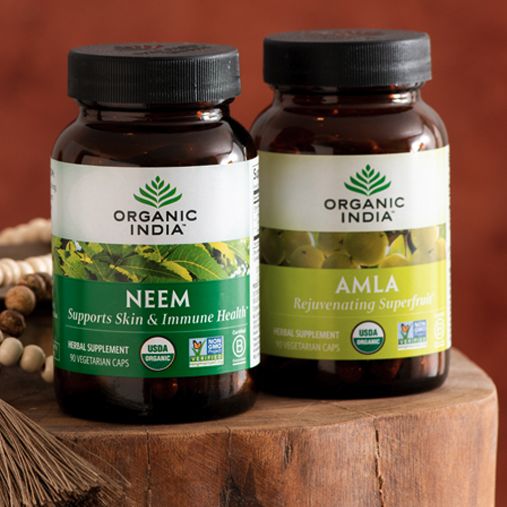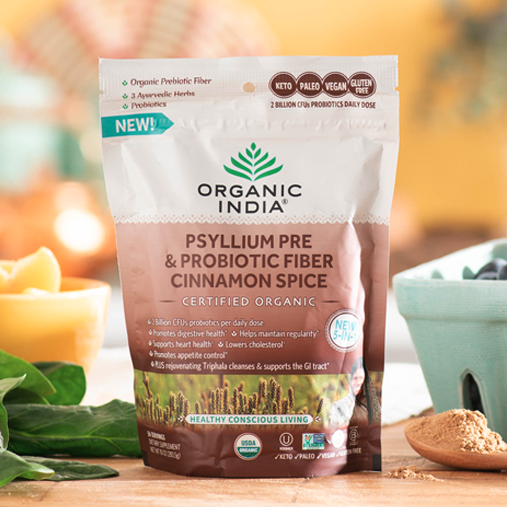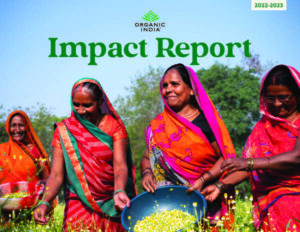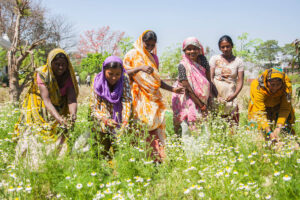Back
Many of us take for granted our access to healthy food — most conventional grocery stores now offer organic produce and products, and for many, it’s an easy trip to a natural food store or seasonal farmer’s market. But consider what life would be like if the only food available was highly processed, prepared products laden with chemicals, sodium, and preservatives — imagine that fresh, healthy foods were either inaccessible or priced far beyond your food budget.
This is precisely the case in what the US Department of Agriculture (USDA) calls “food deserts.” This phenomena is identified by measurements including: a poverty rate of 20 percent or higher; and at least 33 percent of the population living more than a mile from a large supermarket, or more than 10 miles if in a rural area — this includes Native American tribal lands. According to the USDA website, “The lack of store access in these communities may contribute to poor diet, obesity, and other diet-related illness.” An estimated 55 million people live in food deserts in the U.S.
Growing Up in a Food Desert
ORGANIC INDIA USA Ambassador Tasha Edwards has first-hand experience with food deserts. Now a fitness influencer, certified integrative health coach, and personal trainer, she had to overcome obstacles to regain her health after growing up with limited access to healthy food.
“I grew up in a housing project on the Southside of Chicago. We only had one local grocery store and we had to catch the city bus to the main grocery store about once a month. We had a farmer’s market a few miles down (not walking distance and miles in Chicago are like dog years) and I would only go if we went to my aunt’s house because that’s where we would catch the bus. And that was rare. So, my food mostly came from the little grocery store. We had little restaurants in the neighborhood but they were NOT selling salads.”
She said that meal staples were beans, spaghetti, pork, cornbread, and chili. “We ate what everyone else in our neighborhood ate. I’m not sure if I had ever heard of whole wheat bread or brown rice.” She added that her family has a history of illness that she attributes to diet. “I think it’s systemic, eating and cooking the way we do. It was generational poverty and the things that came along with it and it’s just what we knew.”
Food Deserts in Farm Country
Ironically, food deserts are common in the nation’s agricultural heartland — while there are an abundance of farms, most are dedicated to growing corn and soybean for animal feed rather than human consumption. According to an article published on the diabetesforcast.org website, “They have all this food around them [on farms], but they have limited access to fresh food. It’s not the nutrient-dense fruits and vegetables we want to see people consuming on a regular basis. The average corner store doesn’t carry much, if any, of these items, and prices are markedly higher.” The article goes on to say that, “Multiple studies in cities and rural communities have shown a correlation between the availability of healthful food and diet-related health, specifically obesity, a risk factor for type 2 diabetes.”
The Food Desert Impact on Health

According to a study published by the National Center for Biotechnology Information, those living without access to healthy food are 55 percent less likely to have a good-quality of diet than those living in areas with higher availability of fresh produce and other healthy foods. Those living in areas with higher availability of healthy foods had a 45 percent lowered incidence of diabetes over a five-year period.
Neighborhoods with higher prices for fruits and vegetables demonstrated increased weight gain and obesity in children over time. Families who moved to more affluent neighborhoods with access to healthier foods demonstrated a reduced body mass index (BMI) — a sign of improved health and body weight. As for the bottom line, food deserts correlate to $71 billion in health care costs that could be reduced or eliminated with nutrition-isolated communities having access to healthier foods.
Finding Refuge in Nutrition and Healthy Eating
When Tasha Edward left home for college, she was exposed to new, healthier foods. “I don’t think I have had an avocado until my late 20’s. We never ate that. I didn’t learn that there was more than one type of lettuce (we only had access to iceberg) until I worked at a grocery store in a high end area in Nashville and would have to ask “what is this?” so I could ring it up.”
This led her to exploring, then teaching healthy living on a budget to food stamp recipients. “I remember what it was like bringing in foods like squash and beans that didn’t have pork in them. I had just really gotten serious about my own diet earlier that year (was tired of the weight) and was willing to try anything.” She adds that after the birth of her second child, she embraced vegetarianism for weight management, and joined a group dedicated to veganism for Black women. “That group changed my life,” she said.
Changing the Nutritional Climate in Food Deserts
How can the trend of food deserts and their fallout of poor health and nutritional deficits be changed? There are several methods — some involve federal and state initiatives, while some are independent and self-sustaining — others are a combination of all of the above. Ultimately, the goal of any of these methods is to make fresh, healthy foods easily accessible to food desert communities.
A New Non-Profit Supermarket Model
With a population of 35,000, Chester, PA’s last supermarket had closed in 2001, putting it on the map as a designated food desert, one of 35 in the Delaware Valley region. This area, south of Philadelphia, was once a heavy manufacturing and ship building powerhouse, but those industries left in the 1980s and 90s.
With a 36 percent poverty rate, and a 13 percent unemployment rate, about half of the city’s residents didn’t own cars. Families struggled for years to find accessible, healthy food options, but relief came in the form of the nation’s first non-profit grocery store.
Opening in 2013, the Fare and Square Supermarket was the brainchild of Bill Clark, executive director of Philabundance, a hunger relief nonprofit. Shoppers with annual incomes equal to or less than twice the federal poverty level sign up for free membership, receiving a seven percent store credit for purchases. Sixty percent of shoppers use food assistance programs to pay for groceries. The store receives assistance from governments, charities, foundations, and corporations, and negotiates reduced prices for products and equipment, but the goal is to achieve self-sufficiency.
“We had 5,000 members signed up by the date of opening, half of the total community of 10,000 households,” said Clark. “As a non-profit, we can keep longitudinal data and see if we’re successful at getting customers to consume more fresh meat, produce, and low-fat dairy products. We’re not going to be judged on profitability and return on investment — rather, we will be judged on how well we meet the needs of a community and how well we provide a healthier purchasing environment. We’re extremely proud that 80 percent of our employees come from the community, and many had been unemployed for several years.”
Food Co-ops
In poor urban areas, many residents have a deep fear of gentrification that will raise rents and cost of living, driving them out of their homes and businesses. Because of this, there is resistance to corporate-driven development plans that include large supermarkets — often residents refuse to shop at those stores, which go out of business soon after opening.
But worker-owned food co-ops have a significantly higher success rate than commercial supermarkets in areas resisting gentrification. The co-op model is designed to adopt local hiring practices and pay living wages to employees, which strengthens local economies.
The Mandela Grocery Cooperative in Oakland, CA is run by worker owners, who reflect the demographic of the neighborhood, and is guided by a “community centered mission.” The co-op opened in a West Oakland food desert in 2009, and focuses on sourcing food from farmers and entrepreneurs of color. The effort has been so successful that it has expanded to East Oakland.
Federal Legislation
The Healthy Food Financing Initiative (HFFI) is part of a national effort to support food retailers in nutritional deserts. The HFFI contributes to grocery stores and farmer’s markets that bring healthy food to underserved areas. Between 2011 and 2016, HFFI contributed $51.8 million in funding to these efforts.
Community Supported Agriculture (CSA)
CSAs are grassroots organizations that allow consumers direct access to locally grown food. Essentially, a farmer offers “shares” to the public, typically consisting of a box of vegetables, but farmers can offer other products as well. Farmers have the advantage of selling their harvests directly to consumers, and customers have access to super-fresh food straight from the field. Urban CSAs bring produce straight from the field to underserved neighborhoods — but CSAs require local planning and buy-in.
Healthy Corner Stores
In Denver, CO, the Department of Public Health & Environment launched the Healthy Corner Store Initiative (HCSI) project to help neighborhood stores expand and promote healthy, fresh food selections. “By working with store owners, food distributors, and community residents, the initiative works to make it easier for families to find healthier food options,” according to the denvergov.org website. By the end of 2017, HCSI had enrolled 50 stores. HCSI facilitates building relationships between small food retailers and local farmers and providers, and empowers business owners with training and technical support to make healthy changes profitable.
Food deserts are symptomatic of social and economic inequalities — whether they be urban neighborhoods or Native American communities. Tasha Edwards explained, “We have to bring resources to the people and work on the prices so that it is more of a reality. We have to look at things like minimum wage (because you cannot afford to eat organic when you’re barely putting a roof over your head working 50 hours a week).
“We have to change our prejudices, believing that people are only in a deficit because they want to be. We need food banks set up that don’t just distribute the government leftovers — heavy on processed carbs and canned food. We need to give other things AND be willing to educate instead of packing up ten boxes of Mac and cheese and peanut butter and saying people should be thankful.”















